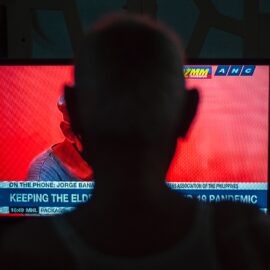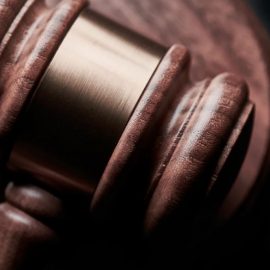
This is a free excerpt from one of Shortform’s Articles. We give you all the important information you need to know about current events and more.
Don't miss out on the whole story. Sign up for a free trial here .
Who is eligible for student loan forgiveness? Could your loans be entirely eliminated? What other debt relief perks are you eligible for?
President Biden announced his debt relief plan in August, which will forgive hundreds of billions of dollars in student debt. Millions of people are applauding the plan’s aim to help current and former college students survive the burden of student loan debt.
Read on to learn who is eligible for student loan forgiveness under Biden’s debt relief plan.
Student Loan Forgiveness: Are You Eligible?
President Joe Biden recently announced a plan to forgive hundreds of billions of dollars of student debt. At the same time, he also extended a pause on student debt repayment and shrunk the size of borrowers’ monthly payments to a smaller percentage of their income. Amid rising calls to make college more affordable, Biden’s plan aims to help middle- and working-class college students and graduates manage heavy student debt loads. But the plan has critics on both sides of the aisle—saying the debt relief goes too far, doesn’t go far enough, or is misguided—and due to its complexity, many are left wondering who is eligible for student loan forgiveness.
Eligibility Requirements
Roughly 40 million people stand to benefit from the debt relief plan—and about half of them could have their debts eliminated entirely.
Here are the details about who is eligible for student loan forgiveness:
- The plan cancels $10,000 of student debt for eligible borrowers and $20,000 for eligible borrowers who received a Pell Grant.
- Borrowers must make less than $125,000 a year, or $250,000 for married couples, based on adjusted gross income from 2020 or 2021.
- Borrowers are still eligible if they’re a current student, if they didn’t finish their degree, or if their loans were previously in default.
When Biden first announced the plan in August, it applied to all federal student loans—including Perkins loans and Federal Family Education Loans (FFEL), which are federally backed and managed by private banks. The Education Department’s website instructed borrowers to consolidate their Perkins and FFEL loans into Direct Loans to qualify for loan forgiveness. However, on Sept. 29, the eligibility requirements changed to exclude Perkins and FFEL loans. Legal experts speculate that the exclusion could prevent the private lenders that manage these loans from suing on the basis that the loan forgiveness cuts into their profits from managing those debts.
In total, about 4 million people hold FFEL loans. Of those 4 million, borrowers who already have Direct Loans and those who consolidated their FFEL loans before the Sept. 29 change will qualify for debt relief. But that still leaves nearly 800,000 borrowers out of luck.
What Else Did Biden Announce?
While loan forgiveness took the spotlight, Biden also addressed student loan payments. Aside from learning who is eligible for student loan forgiveness, it’s also helpful to know what relief you can expect on your student loan payments.
First, the administration extended the nearly three-year payment pause through December. President Donald Trump initially froze payments and interest on student loans when the pandemic started in March 2020. That pause has since been extended six times, and Biden’s latest call to continue the freeze will likely be the final extension.
Second, the administration changed income-driven repayment programs to cap borrowers’ monthly payments at just 5% of their discretionary income, instead of the previous 10-15%. Additionally, there is now a broader definition of non discretionary income (money spent on essentials like rent and food).
Finally, borrowers with balances of $12,000 or less can have their remaining balance forgiven after 10 years of faithful payments—instead of the current 20 years.
What’s the Catch?
At this point, most of those eligible for student loan forgiveness can enjoy the perks of loan forgiveness with no downside.
However, seven states have laws that will or might tax forgiven debt as income. Unless these states change their laws, borrowers in North Carolina, Indiana, Mississippi, Arkansas, Minnesota, Wisconsin, and California could face higher taxes or smaller tax returns. That could range from $300 to $1,100 in taxes for $10,000 of debt relief, according to the Tax Foundation.
Additionally, borrowers who want to apply for loan forgiveness should act fast, as a handful of lawsuits threaten to put an injunction on Biden’s plan.
How to Get Your Loans Forgiven
The debt cancellation will be automatic for about 8 million borrowers, whose recent tax returns are already on file with the Department of Education because of their enrollment in income-driven repayment programs. For everyone else (and for those who aren’t sure if the Department of Ed has their updated income data), the application is currently available through beta mode on the student debt relief website—the formal version is set to be released later in October.
Borrowers should see their loan balances reduced or eliminated within six weeks of applying. Experts recommend submitting the application by November 15 so that the debt cancellation can take effect before January 1, when payments will resume after the current freeze expires. Borrowers whose balance is eliminated will start the new year free of student debt, and those whose balance is reduced can resume smaller monthly payments.
If you don’t submit the application by November 15, you still have time—the Department of Education will accept applications until December 31 of next year.

Want to fast-track your learning? With Shortform, you’ll gain insights you won't find anywhere else .
Here's what you’ll get when you sign up for Shortform :
- Complicated ideas explained in simple and concise ways
- Smart analysis that connects what you’re reading to other key concepts
- Writing with zero fluff because we know how important your time is






